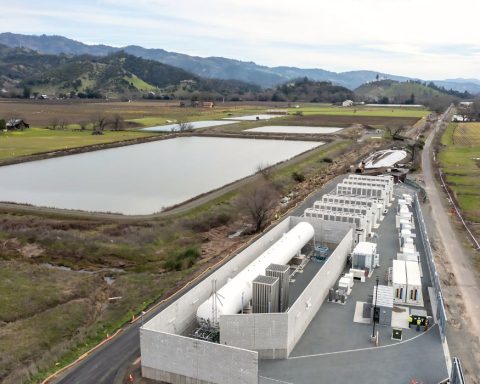In this time of great uncertainty, frontline and essential workers are working to keep us safe from COVID-19, businesses are racing to retool to fill critical healthcare needs, and governments are working tirelessly to roll out urgently needed financial relief and keep essential services intact. These efforts are paramount as we strive to flatten the curve on this pandemic and keep households and communities afloat.
Canada’s auto-manufacturing sector has joined in delivering essential services and is redeploying to produce desperately needed medical supplies, including ventilators. It’s a move that could help countless Canadians. As that essential work continues, many of us are looking ahead at the eventual task of rebuilding Canada’s economy when we finally emerge. Along with immediate financial relief for workers, businesses and communities, discussions are under way about how investments can be made to stimulate our economy for the long term and insulate workers against future shocks.
For the auto sector itself to thrive post-pandemic, significant opportunity lies in creating jobs and stimulating our domestic economy through investments in electric vehicle production. In recent years, we’ve seen a downturn in conventional engine (non-electric) vehicle production in Canada, with plants closing and thousands of jobs lost. A newly released report by the Pembina Institute and the International Council on Clean Transportation found that to future-proof Canada’s auto industry, we’ll need financial investments paired with targeted policy driving electrification.
The future is clearly electric: globally, light-duty electric vehicle sales have grown more than 60% a year since 2012. But Canada produces only one plug-in vehicle model, which accounts for less than 0.5% of domestic light-duty vehicle production.
As the global economy goes low-carbon, demand for electric buses, cars and trucks will only accelerate. We want to ensure domestic production matches demand. The good news is that Canada is well positioned to lead, thanks to a history of auto-making, particularly in Ontario.
The global market for electric heavy-duty trucks and passenger buses is growing rapidly as well, with major companies and cities – including Toronto and Edmonton – investing in electric fleets. Canada has been ahead of the curve on electric heavy-duty vehicle manufacturing, as the sixth largest producer of electric HDVs globally, with production and assembly facilities for electric HDVs concentrated in Quebec. The foundation for growth is already laid. Considering that GHG emissions from freight are projected to eclipse passenger vehicle emissions by 2030, investing in the switch to electrification for heavy-duty vehicles makes environmental sense, too.
Along with light- and heavy-duty electric vehicle manufacturing, we found huge potential for hydrogen fuel cell production in Canada. It’s expected that hydrogen will play a major role in the electrification transition for commercial vehicles. We can build on early leadership in developing and producing hydrogen fuel cell technology, especially for heavy-duty freight vehicles in the long term. With hydrogen and fuel cell companies already in British Columbia, Alberta, Manitoba, Ontario and New Brunswick, the potential for job growth across the country is ample.
Finally, while federal and provincial investment is critical to give the electric vehicle industry the boost it needs, any support should be complemented by a comprehensive suite of policies. Electric vehicle supply needs an increase in demand, and vice versa. By giving investors and consumers the policy signals they need (research and development funding, financial support for manufacturing plants, a clean fuel standard and a national zero-emission vehicle sales mandate), we can help fuel both supply and demand.
New analysis by Navius Research Inc. estimates that, with a strong national ZEV policy framework, including a zero-emission vehicle mandate and subsidy for electric vehicle manufacturing, the zero-emission vehicle economy could grow to account for $152 billion ($2015) of Canada’s GDP and employ 1.1 million workers by 2040.
With the right investments in manufacturing and retraining for autoworkers, coupled with important policy signals, Canada can become an auto manufacturing heavy hitter again, all while revving the low-carbon economy.
Carolyn Kim leads low-carbon transportation initiatives and is the Ontario director for the Pembina Institute.
Ben Sharpe is senior researcher and Canada lead for the International Council on Clean Transportation.







